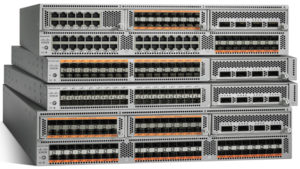In this post, we will examine the Cisco Discovery Protocol in some detail. In the next post, we will tackle LLDP.
CDP is a Layer 2, media-independent, and network-independent protocol that runs on Cisco devices and enables networking applications to learn about directly connected devices nearby. This protocol facilitates the management of Cisco devices by discovering these devices, determining how they are configured, and allowing systems using different network-layer protocols to learn about each other.

While it is a Cisco invention, this protocol is so important to so many companies that many of them have adopted it for those devices as well. If the devices do not actively send the protocol, they can at least understand it when receiving it from true Cisco devices.
One reason you might have heard of companies disabling CDP on devices would be a result of security concerns. It is not necessarily a great idea to have network devices describing their properties and even their capabilities to other devices on the network.
Cisco Discovery Protocol is enabled by default. Each device configured for Cisco Discovery Protocol advertises at least one address at which the device can receive messages and sends periodic advertisements to the well-known multicast address 01:00:0C:CC:CC:CC. Devices discover each other by listening at that address. They also listen to messages to learn when interfaces on other devices are up or go down.
Advertisements contain time-to-live information, which indicates the length of time a receiving device should hold Cisco Discovery Protocol information before discarding it. Advertisements supported and configured in Cisco software are sent, by default, every 60 seconds on interfaces that support Subnetwork Access Protocol (SNAP) headers. Cisco devices never forward Cisco Discovery Protocol packets. Cisco devices that support Cisco Discovery Protocol store the information received in a table. Information in this table is refreshed every time an advertisement is received, and information about a device is discarded after three advertisements from that device are missed.
Cisco Discovery Protocol Version 2 provides more intelligent, device-tracking features than those available in Version 1. One of the features available is an enhanced reporting mechanism for more rapid error tracking, which helps to reduce network downtime. Errors reported include mismatched native VLAN IDs (IEEE 802.1Q) on connected ports and mismatched port-duplex states between connected devices. Messages about reported errors can be sent to the console or to a logging server.
Remember, to disable CDP on the entire device, use no cdp run. To disable CDP on a select interface, use no cdp enable under that interface.